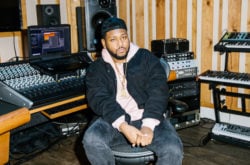When it comes to using samples and loops in your own music, copyright is important. Find out about the advantages of royalty-free content.
What is Sampling?
Simply put, sampling means you’re taking part of an existing sound or musical recording and using it in another recording or piece of music. This creative idea has played a huge role in the contemporary music of today, and especially when it comes to electronic music. While it didn’t pose a significant copyright issue at first, sampling became more much more prevalent with the rise of Hip Hop in the 1980s.
As this sample-heavy genre grew into the mainstream, artists and producers whose material was being used in hit tracks now wanted a piece of the pie. This meant that artists had to pay for clearance to use existing audio in their own music, which was only possible for the most successful musicians out there. This has lead to a lot of debate and discussion in the United States, whether in the form of legal battles regarding uncleared samples or the current state of copyright law and the way it affects artistic freedom.
Using royalty-free samples
Copyright is obviously not an issue when you record musical instruments or make your own field recordings, but what about when you use existing material? You would usually need to get the owner’s permission to use their audio, usually in the form of a license. In addition, you might be required to pay a “royalty” (a fee) for every time the audio is featured in your project, as well as for each time your track is played on a radio station or in a club. If you think this would require a lot of work and money, you’d be right. This is where royalty-free samples come into play!
When you purchase a royalty-free sample library, you also get a comprehensive license that allows you to use the included samples in your music without having to pay any additional royalty fees. These sounds are now free for you to use in any personal or commercial music project! By removing the risk and hassle associated with re-using copyrighted material, royalty-free samples allow producers to focus completely on the creative process and make some truly innovative music.
Where to find royalty-free sounds
And now, the big question you’ve been asking yourself: Where can I get royalty-free audio to use in my own music? One of the best places to discover new material to use in your music is Splice Sounds, which contains 800,000 unique samples and loops from some of the most respected providers out there. In addition, we work closely with artists and music labels to release exclusive packs that you won’t find anywhere else. And the best part is that everything on Splice Sounds is completely royalty-free!
Now, if you are looking to sample some existing musical material (like a vocal acapella), there is plenty of information out there on how to get sample clearance and navigate the landscape of music copyright. There are also sites that host user-uploaded audio content. Freesound and SoundBible let you filter search results by usage rights – some samples can be used as long as your give the owner credit and don’t use them for commercial means, while others have no such restrictions.
Take your music further with the new plugins, fresh sounds, and more available in the Splice Creator plan:
March 25, 2016



